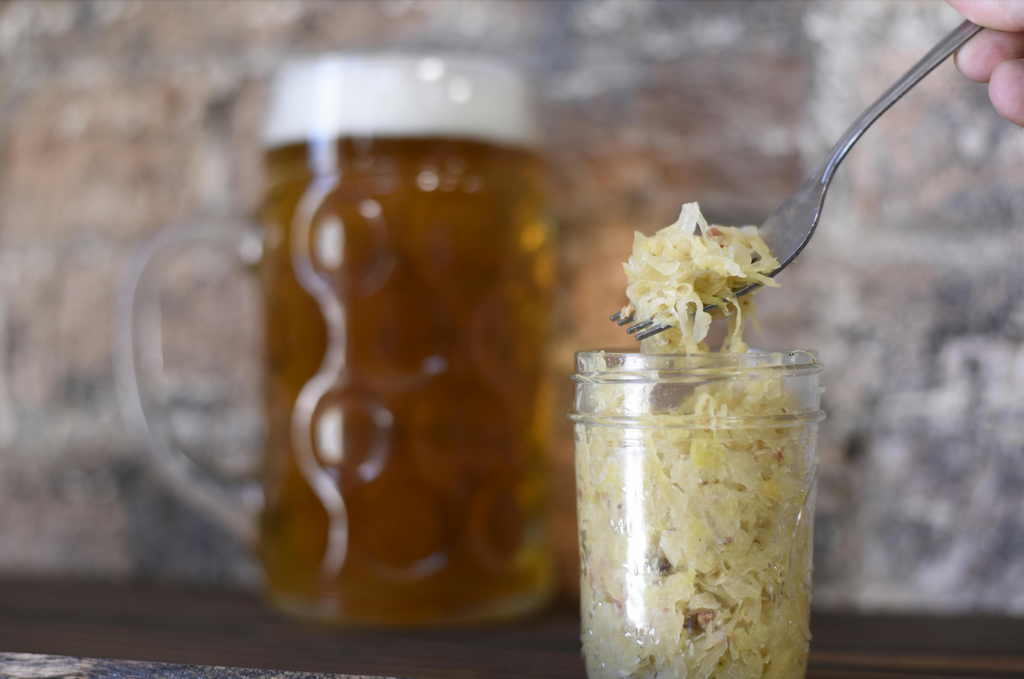A Beginner's Guide
You don't need to be of German descent to be able to make a killer sauerkraut. Making sauerkraut at home is both straightforward and rewarding - all it requires are a few ingredients, following some important principles and patience to turn ordinary cabbage into delicious crunchy snacks that boast many health benefits. This article will walk you through every step of this process so that soon enough, you will become an expert sauerkraut creator.
Why Make Sauerkraut?
Sauerkraut isn't just delicious; it can make a huge difference to your health. Sauerkraut is packed with probiotics, prebiotics and postbiotics, vitamins, and minerals that will boost your immune system, improve your mental and physical health, promote weight loss, improve fitness gains and promote healing for many diseases and conditions. Making sauerkraut at home can save money when compared with store-bought options and provide that immense satisfaction that you get when you create something JUST RIGHT!
Important Principles
Keep it airtight:
The most important factor when fermenting veggies is to keep oxygen out of the fermentation container. Exposed to oxygen, veggies will quickly be covered by mould and yeast. The problem is that carbon dioxide is produced during fermentation so that if the container is completely sealed the container may crack or explode. At Gutsy we use an airlock. The included silicon airlock allows carbon dioxide to escape and push out an oxygen keeping your fermenting veggies mould and yeast free for longer.
Fermenting Vessel :
During fermentation the veggies become quite acidic, because of this we recommend not fermenting your veggies in plastic as taste and chemicals can leach over time. At Gutsy we ferment our veggies in oak barrels, but glass is the next best option.
Water:
Chlorine in tap water doesn’t help beneficial bacteria during fermentation. If you’re making up a brine we recommend using filtered, spring, or rain water.
Starter Culture: To use or not to use. All of our Gutsy Ferments are wildly fermented (no starter used) which ensures that the veggies go through all cycles of fermentation naturally. Wild fermentation creates a delicious taste and maximised the probiotic count. Adding a culture starter does shorten the fermentation time, but you sacrifice taste and benefits.
Salt:
Non iodised sea salt is best for fermenting as iodine has antimicrobial properties. In Gutsy Ferments we use Great Barrier Reef salt, but you can play with all different types of salt.
What You’ll Need
Before getting into the process of making sauerkraut, make sure you have all the necessary supplies. Here's a breakdown of what you'll need:
Ingredients
1 medium cabbage (about 2 kg)
30 grams of sea salt (non-iodised is best)
caraway seeds or other spices to enhance its flavour if you want - the world is your oyster here.
Equipment
A large mixing bowl
Clean glass or ceramic jar with around 2-litre capacity
Glass or stone weight (second best option is to keep some outer cabbage leaves to jam into the to of the jar)
Lid to cover the jar to keep it airtight
Fermentation airlock (optional but highly beneficial to prevent pressure build-up)

Step-by-Step Guide to Making Sauerkraut
Step 1: Preparing the Cabbage
Start by pealing any old or dirty outer leaves off of your cabbage. Slice it into quarters and remove its core before finely shredding the cabbage using either a sharp knife, mandoline, or food processor in order to achieve consistent sizes for even fermentation.
Step 2: Salting the Cabbage
Place your shredded cabbage into a large mixing bowl. sprinkle in the salt. If you have other herbs or spices you want to add to the sauerkraut, throw it in the bowl now. Now comes the fun part - get your hands involved and massage together for 5-10 minutes until all natural juices have been extracted from the cabbage. A wooden pounder can help with this step to pound and press and squeeze out the juice, while mixing in the salt. At the end of this pounding, squeezing, mixing process you want to have extracted enough juice form the cabbage that it can be submerged under its own brine.
Step 3: Packing the Jar
Now that your cabbage has been well-seasoned and juicy, it's time to pack it into its fermentation jar. Transfer your mixture from its mixing bowl into your clean jar by pressing down with either your fist or pounder firmly until all air pockets have been eliminated. Be sure to leave approximately 2-5 cm space at the top of the jar so juices don't overflow
Step 4: Weighing It Down
To keep the cabbage submerged in its brine, weigh it down with something. A glass, food-grade fermentation weight works well, you can find a nicely shaped river rock, but this can be tricky. Alternately keeping a few of the big, outer cabbage leaves to jam into the to of the jar can keep the finely chopped cabbage leaves submerged.
Step 5: Fermentation Time!
As discussed above we want to keep all the fresh oxygen out of this jar. So you if you don't have an airlock, you can place the usual, airtight lid on, and crack the lid open every day or two, just to release the pressure buildup. Place your jar in a cool dark location ideally between 18-22degC for ideal fermentation results. For optimal probiotics, ferment for 4-6 weeks, depending on temperature and taste. After the first 2 weeks, have a little taste every few days until it's fermented to an intensity that you enjoy.
Step 6: Enjoy and Store
Once it reaches the right tanginess for you, store it in the fridge to stop the fermentation and keep it for months or years.
Can't be stuffed making your own? That's ok too, you can always buy Gutsy Kraut




